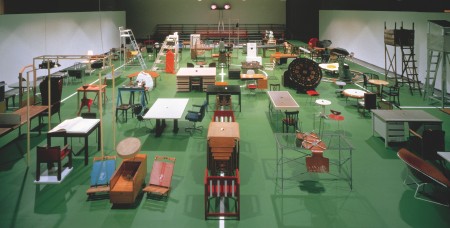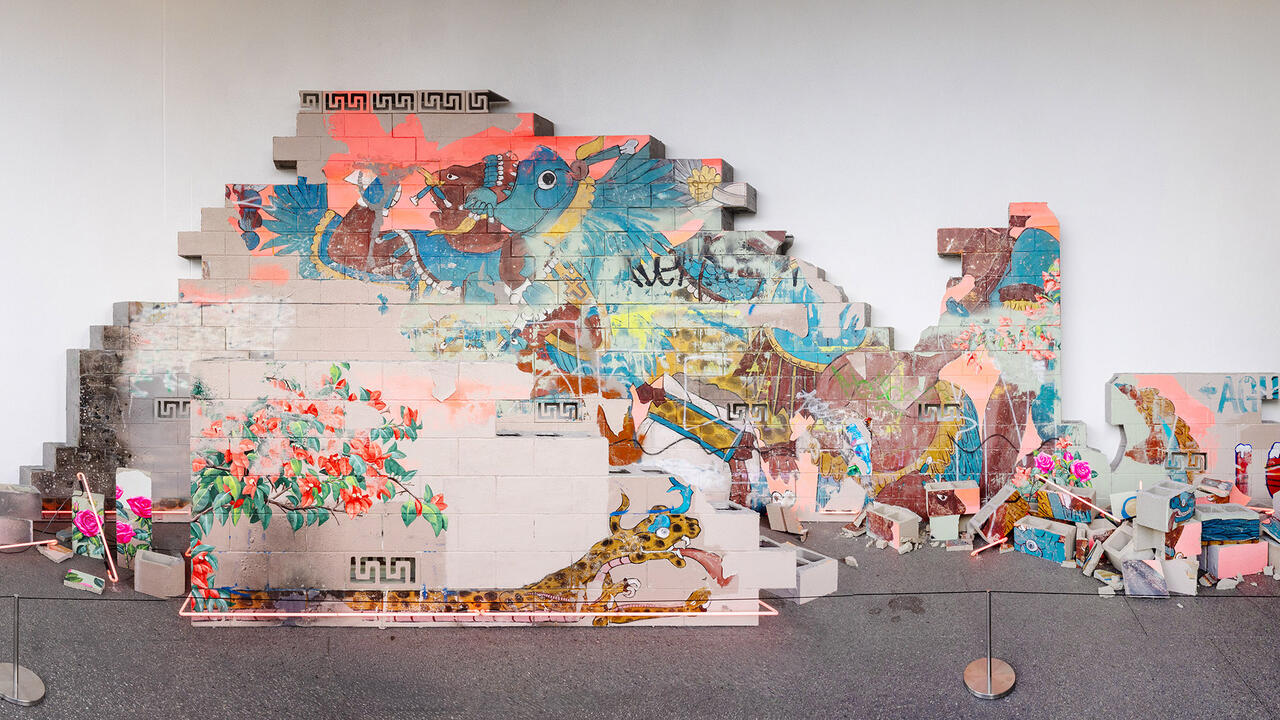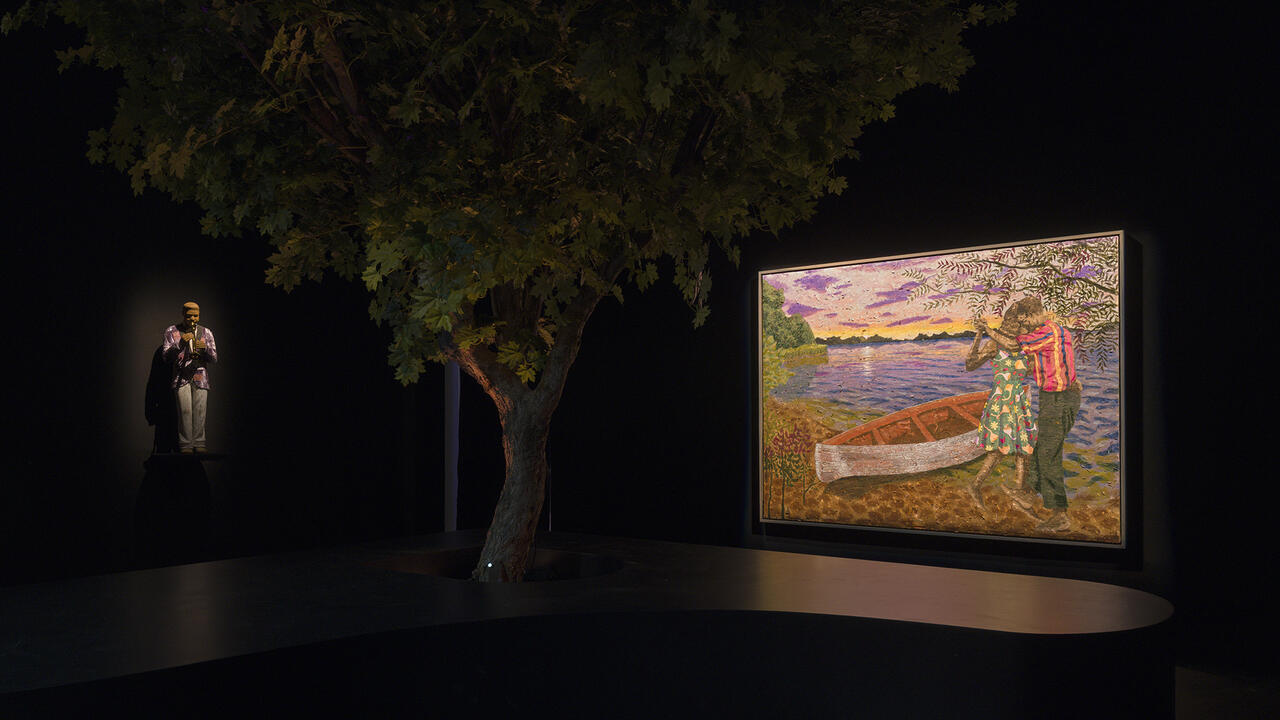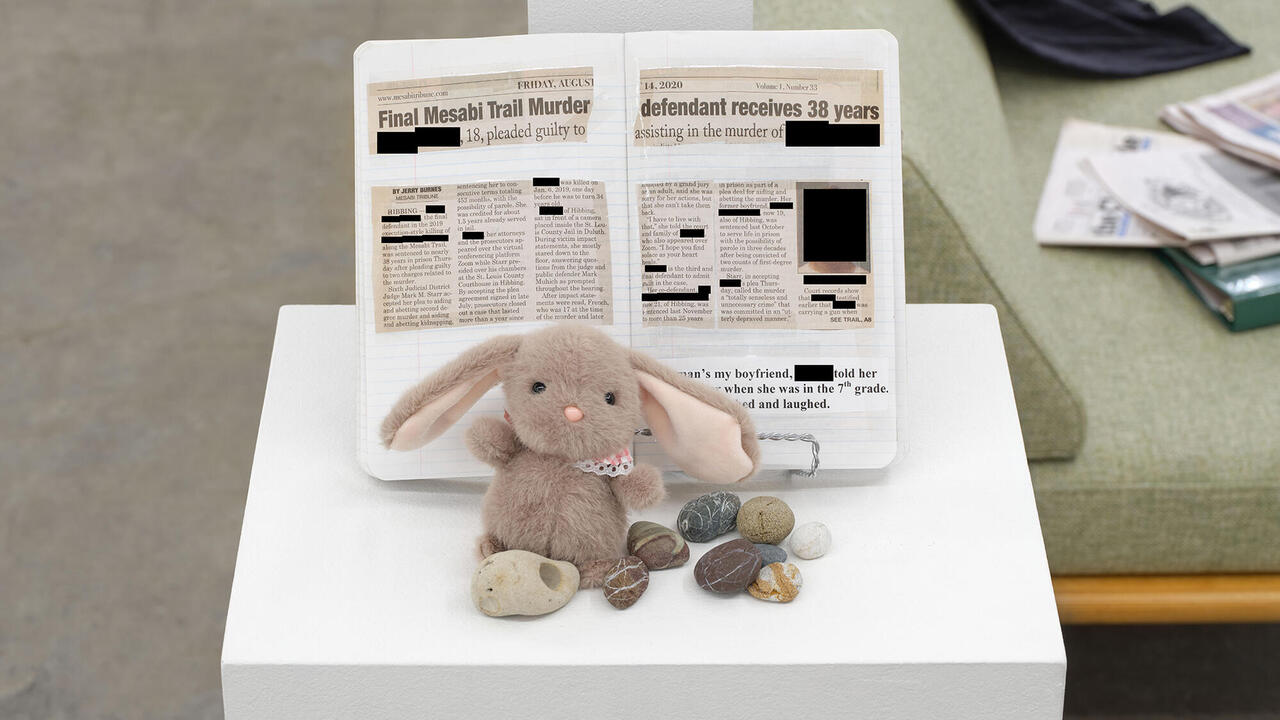Martin Kippenberger
MOCA Grand Avenue and The Geffen Contemporary at MOCA, Los Angeles, USA
MOCA Grand Avenue and The Geffen Contemporary at MOCA, Los Angeles, USA

In Martin Kippenberger’s epic installation The Happy End of Franz Kafka’s ‘Amerika’ (1994) a roomful of unmatched desks and chairs are arr-anged on a green sports ground, with bleachers on each end. The piece takes its title from Kafka’s unfinished last novel from 1927, which ends with its protagonist applying for work at the Nature Theatre of Oklahoma after reading an advertisement stating: ‘Whoever wants to be an artist should sign up’. Kippenberger’s installation was an effort to complete Kafka’s work without fixing it to a single narrative; each desk represents a job interview, to be carried out by Kippenberger and his colleagues, collected and published. The Happy End… is a concept, but it also signifies a performance, of every job applicant and every artist, and the capacity to reinvent the same subject with each performance.
The theme of reinvention recurs throughout Kippenberger’s body of work. The catalogue for his retrospective ‘Nach Kippenberger’ at the Van Abbemuseum, Eindhoven, in 2003, featured an essay by Diedrich Diederichsen entitled ‘Der Selbstdarsteller’ – literally, ‘the self-performer’. Kippenberger reproduced his surrounding world as art at manic speed, and his art reproduced the role of Kippenberger. Since his death in 1997, aged 44, his party-boy persona has become an art-world legend. He stumbled, sometimes literally, but deliberately and dramatically, through the art system, leaving a legacy ranging from his hotel-stationery drawings to the false subway entrances of his Metro-Net World Connection (1993–7). His ideas moved too fast to be contained by a single style; the constant is the dynamic presence of the artist himself.
‘Martin Kippenberger: The Problem Perspective’ featured around 250 works, spread across two of MOCA’s three locations. His installations – including The Happy End…, and the clever Spiderman-Atelier (1996) – commanded attention for their ambition. But the most monumental project may have been the hundreds of promotional photographs, posters and postcards that lined the spaces between the other works. This strategy, the promo as the art, was central to Kippenberger’s practice, as it engaged the artist (‘fictionalized and poeticized’, in the words of Diederichsen) in a cycle of re-presentation. In some works Kippenberger’s self-promotion satirized his self-mythologizing. In a poster commemorating his 25th birthday, with the slogan ‘1/4 Jahrhundert Kippenberger als Einer von Euch, unter Euch, mit Euch’ (‘Quarter of a century of Kippenberger as one of you, among you, with you’, 1978), he strikes the populist pose of the politician. In other works he plays the punchline to his visual jokes. A photograph from his exhibition ‘Helmut Newton für Arme’ (‘Helmut Newton for the Poor’, 1985) pictures him dressed as an old maid, while a postcard from the series ‘Knechte des Tourismus’ (‘Vassals of Tourism’, 1979) has him ‘breaking out’ of a mock prison cell. In either case Kippenberger pulls off his jokes without a trace of the art world’s too-cool-for-school posturing.
Although much of the immediacy of these works lies in their relationship with his culture and his network of social relations, their continued relevance results largely from his willingness to make himself visible, not only as author and an image but also as a body. Kippenberger foregrounded his own physicality with astonishing frankness. A series of self-portraits from the late 1980s depicts him as flabby and aged in a pair of high-waisted white underpants, a reference to a famous photograph of Pablo Picasso in similarly unflattering swimming trunks. As he posits his genius through his association with Picasso, he simultaneously deflates his mythos (and, by extension, that of Picasso and the ‘artist-genius’) by conflating it with the abject body, increasingly defined by its breakdown.
The self-portraits are a sombre counterpoint to the earlier images of the young, cocky dandy who likened himself to the Austrian actor Helmut Berger ‘on a good day’. But both communicate with the viewer through a language of presence. Recurring sculptural forms play a similar role. Figures such as Fred the Frog (1990), a crucified wooden frog holding a beer stein, and the crooked Street Lamp for Drunks (1988) stand in as comic analogues for the artist, yet they enact a lack of control that goes beyond his own alcohol abuse to comment on the cycle of dependence and dysfunction that underlies the moralistic façade of Western culture.
If ‘The Problem Perspective’ refers to anything, aside from the painting series of the same name from 1986, it is the ‘problem’ of Kippenberger – the Conceptualist who made objects and attended to market concerns, the self-performer who perpetually changed. He used art as a means of responding to the problems of society, but he did so by raising new questions. In The Hunger Family (1985), a crude revision of a typical Henry Moore form, for example, he equally satirizes the history of Modernism and confounds the logic of Conceptualism by stripping the object of its transcendence, thus hyperbolizing both its physical presence and its commodity status, chasing it from pathos to bathos. And he treated himself similarly. One of his most iconic pieces, Martin, ab in die Ecke und schäm Dich (Martin, into the Corner, You Should Be Ashamed of Yourself, 1989), a life-size, dressed cast of a male figure facing a museum wall, is a response to charges from the German press that he promoted Nazi sloganeering, sexism, racism and rampant alcoholism. If you can’t behave like a good boy, then no art for you.
Even in an exhibition of this scale it’s difficult to encapsulate Kippenberger’s career. Greater attention to undertakings such as the Metro-Net or its thematic predecessor Tiefes Kehlchen (Deep Throat, 1991) would have been worthwhile. However, the curator Ann Goldstein can be credited with thoroughly representing his range and including supplemental texts. Throughout it all one suspects that Kippenberger was laughing not in spite of the world he saw but because of it. Although viewers were kept off the actual ‘Amerika’ installation, the bleachers allowed access to the imaginary interviews. From a distance the absurdity of the process, and of those repressive cultural conventions that engender it, begins to focus. From the laughter of the condemned comes, always, the funniest joke.






















